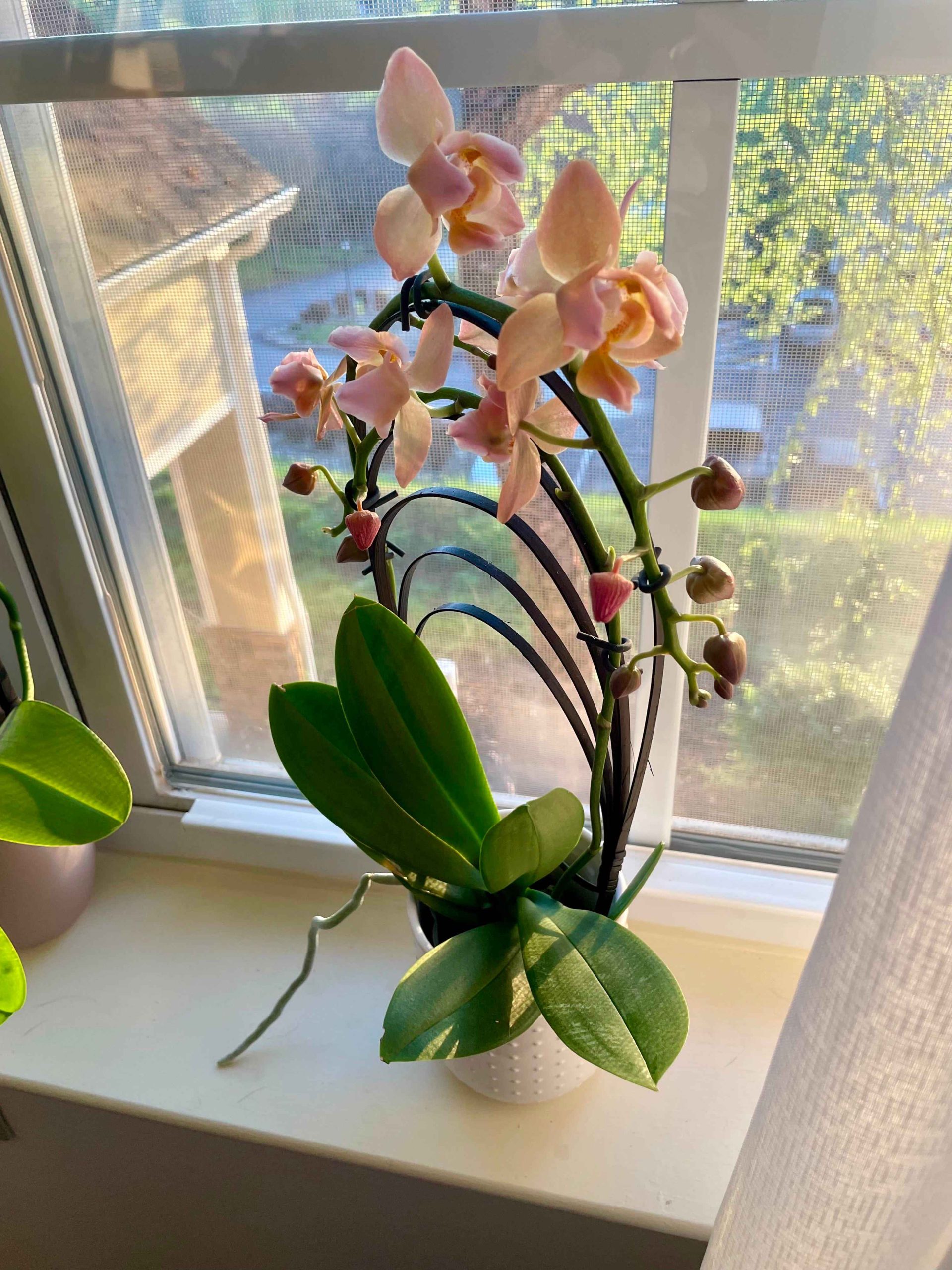When I brought home my first orchid as a newbie plant mom, I was totally intimidated!
But after years of taking care of orchids, I’ve discovered these stunning blooms are actually some of the easiest house plants to grow.
Today, I’m sharing everything I’ve learned about how to care for an orchid, so you can enjoy these gorgeous flowers with total confidence!

Getting Started with Orchids

Types and Varieties
Would you believe there are over 20,000 different orchid varieties worldwide? It’s true! But don’t let that overwhelm you.
For orchid care for beginners, I always recommend starting with either Phalaenopsis (Moth Orchids) or Dendrobiums. These are the ones you’ll typically find at your local grocery store or garden center.
What I love most about these beauties is that some varieties are naturally fragrant. I discovered this on a trip to Turks and Caicos, where I encountered the most incredible native orchid!
Choosing a Healthy Orchid
When I’m taking care of orchids, the first thing I check is what I call “bloom power.”
Look for plants with both open flowers and unopened buds – this gives you the most bang for your buck!
The leaves should be light green (not deep green) and free from spots or sticky substances. Trust me, you don’t want to deal with pest problems right from the start!
Here’s my favorite tip: gently touch the aerial roots. If they’re firm, you’ve got yourself a winner!
Essential Care Requirements

Perfect Placement
Let me share a common mistake I made when I first started indoor orchid care – I put them right in the window!
What your orchid really wants is a bright room away from direct sunlight. Think of it as finding that perfect spot at the beach – not too sunny, not too shady.
Keep your orchid friend away from heating vents, radiators, and fireplaces. These plants are total divas about temperature fluctuations!
Watering Guidelines
Let’s talk about watering orchid tips – and please, forget everything you’ve heard about ice cubes!
As someone who’s killed more than a few orchids with incorrect watering, here’s what actually works: room temperature water only, once monthly in winter and every other week in summer.
My foolproof way to check if your orchid needs water? Look at those orchid roots. Gray and mushy means too much water, while dry and shriveled means it’s thirsty!
Humidity and Air Flow
Here’s something I wish I knew when I first started caring for houseplants – orchids are total humidity lovers!
Just like we need the right environment to thrive, orchids need at least 30-40% humidity. I keep a small humidifier near mine, and they’re living their best lives!
Sometimes I’ll give them a gentle misting too, just like a tropical rain shower. Think about it – in nature, these beauties grow in rainforests!
Speaking of rainforests, your orchids will absolutely love a gentle breeze. I keep a small fan on low nearby to mimic their natural habitat.
Maintenance and Care

Feeding Your Orchid
When it comes to orchid plant care, I’ve learned that less is definitely more with feeding.
I give mine a light feeding once or twice a month with water-soluble orchid food. It’s like serving them a perfect little snack – not too much, not too little!
My favorite method is using a plant food mist around the roots and leaves. It’s super easy and my orchids seem to love it!
Common Problems
Let’s talk about how to save orchid plants – because trust me, I’ve seen them all!
Droopy leaves usually mean water issues (been there!), while yellow bottom leaves are usually just normal aging (phew!).
If you spot a powdery substance, that’s likely mealybugs. Don’t panic! A little horticultural oil or alcohol swab treatment usually does the trick.
Repotting and Reblooming

Repotting Basics
Wondering about orchid repotting? Here’s the good news – these plants only need repotting every three years!
The secret to repotting an orchid successfully is using proper orchid soil with lots of bark. Remember, these plants naturally grow on trees, not in regular potting soil!
Encouraging Reblooms
The most common question I get is about how to make orchids bloom again. It’s totally possible with a little patience!
After blooming, you have two options: remove the entire flower spike at the base, or cut above a node for potential new growth.
Want to know my secret for orchid rebloom? I slightly reduce watering, create cooler nights, and decrease fertilizer. Works like a charm!
Why Choose Orchids

I used to spend a fortune on fresh-cut flowers until I discovered the joy of growing orchids.
For about the same price as a nice bottle of wine, you get months of gorgeous blooms that can rebloom year after year.
These gorgeous blooms make the perfect housewarming gift – and don’t worry, taking care of orchids is way easier than you might think!
Trust me – once you get the hang of indoor orchids, you’ll be absolutely hooked! The satisfaction of seeing those beautiful blooms appear is truly priceless.
Remember, every orchid parent starts somewhere, and with these tips for how to take care of orchids, you’re well on your way to becoming an expert.


